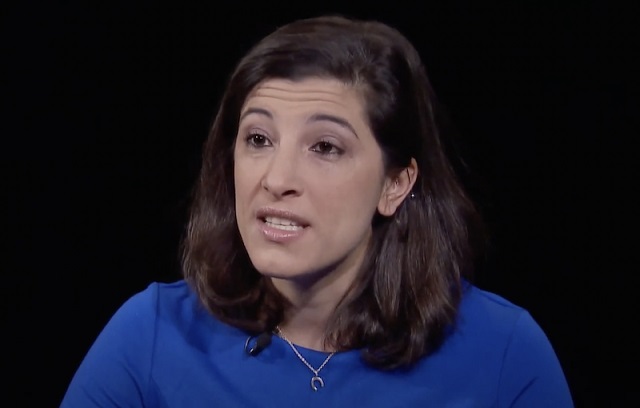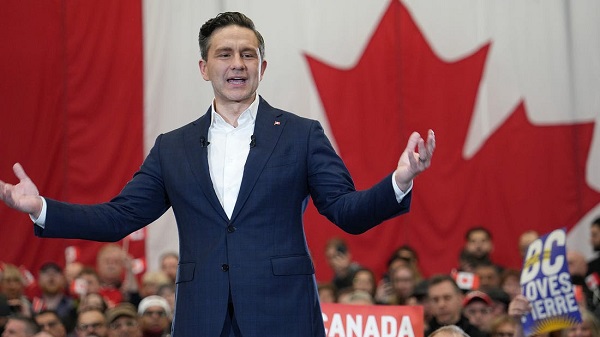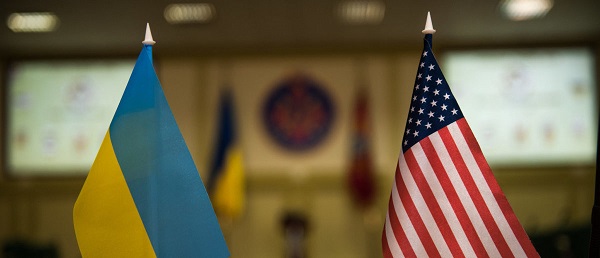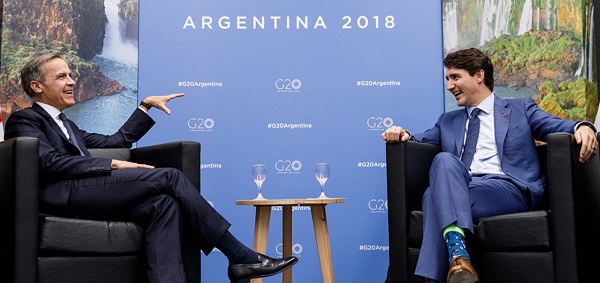Business
How the Deep State is using the ‘Censorship Industrial Complex’ to crush free speech

Renée DiResta is the research director of the Stanford Internet Observatory (SIO)
From LifeSiteNews
The Censorship Industrial Complex, dominated by organizations often run by ex-CIA agents, is working around the First Amendment to suppress dissent and promote a one-world government
Author and reformed climate activist Michael Shellenberger has coined the term “Censorship Industrial Complex,” an apparent reference to President Dwight D. Eisenhower’s Farewell Address in 1961, where the former Army General warned about the influence of the “military-industrial complex.”
In a recently published article, Dr. Joseph Mercola explored the Censorship Industrial Complex, how it works, and who some of the protagonists are. We will examine the following points regarding this nefarious network to understand how the censorship apparatus works:
- A key figure: Renée DiResta
- The Election Integrity Partnership and Virality Project
- The Council on Foreign Relations and the One World Government
- NewsGuard and the “middleware” approach
A key figure: Renée DiResta
Renée DiResta is the research director of the Stanford Internet Observatory (SIO). Mercola fittingly described the organization’s purpose: “[Founded] in June 2019,” the SIO “promote[s] internet censorship policies and conduct[s] real-time social media narrative monitoring.”
DiResta quickly climbed the career ladder despite being involved in a major election manipulation scandal. She previously worked for the CIA and is a member of the influential Council on Foreign Relations (CFR).
DiResta is a prominent example of the connections between the intelligence agency and the censorship industry, but she is certainly not the only one. The organizations that are deciding what is deemed “misinformation” or “hate speech” (i.e., the Censorship Industrial Complex) are often run by former CIA agents. According to Shellenberger’s research, seven former CIA executives serve on the board of the Atlantic Council, an organization partnered with the SIO through several projects.
“The Chief Strategy Officer and the Director of Federal Programs at Graphika, another DiResta partner organization, are former CIA officials,” Shellenberger writes.
In 2018, DiResta organized a false flag online operation that influenced an Alabama Senate race. Before she worked at the SIO, DiResta was the research director at a small political consultant firm, New Knowledge LLC, which received $100,000 from Reid Hoffman, founder of LinkedIn, to help the Democrat candidate win the U.S. Senate race in Alabama. New Knowledge used that money to subscribe thousands of fake Russian bot accounts to Republican candidate Roy Moore’s social media campaign. Mainstream media reports at the time claimed Moore was “backed by Russia,” even though his “Russian backers” were fake accounts created by New Knowledge. Moore’s Democratic opponent, Doug Jones, went on to win the race by a slim margin.
After the election, an internal report from New Knowledge, which detailed the Russian bot operation, was obtained by The New York Times. The report admits that: “We orchestrated an elaborate ‘false flag’ operation that planted the idea that the Moore campaign was amplified on social media by a Russian botnet.”
This revelation gained national media attention and was so scandalous that even members of the Atlantic Council (an organization that now collaborates with DiResta) publicly criticized this egregious example of election interference by New Knowledge.
“Somehow, DiResta survived this scandal and continues to be a leading spokesperson AGAINST disinformation and FOR election integrity, even though New Knowledge was caught red-handed using disinformation to interfere in a U.S. election,” Mercola writes.
Shellenberger said the reason that DiResta was made “the leader of the Censorship Industrial Complex,” next to her intellect and articulateness, is that “[l]ike other American elites, DiResta believes that it is the role of people like her to control what information the public is allowed to consume, lest they elect a populist ogre like Donald Trump, decide not to get vaccinated, or don’t accept whatever happens to be mainstream liberal opinion on everything from climate change to transgenderism to the business dealings of the president[‘s] family.”
The Election Integrity Partnership and Virality Project
The Election Integrity Partnership (EIP) was founded only months before the 2020 U.S. presidential election “to defend our elections against those who seek to undermine them by exploiting weaknesses in the online information environment.”
Mike Benz, former State Department official in the Trump administration and executive director for the Foundation for Freedom Online, explained in a video that EIP was created as a “government cut-out,” a “private” organization that de facto acts as censorship arm for the things the government cannot censor because it lacks the legal authority to do so.
One of the “partners” of the EIP is DiResta’s SIO. Benz also notes that all of the EIP’s partners are at least partly funded by the government.
Elon this video goes over it in insta-PhD level detail. It shows exactly how DHS created the EIP censorship octopus. Condensed to 8 mins here: pic.twitter.com/l5EaxAIChD
— Mike Benz (@MikeBenzCyber) November 7, 2023
In May 2020, a new organization with mostly the same “partners” as the EIP was created, the Virality Project (VP). The VP focused on censoring COVID-related content online, including factual information that “might promote vaccine hesitancy.”
A spokesperson from the SIO (one of the VP’s founding partners) claimed it “did not censor or ask social media platforms to remove any social media content regarding coronavirus vaccine side effects.” Perhaps the SIO did not censor content directly, but the VP that was founded by the SIO certainly did, as the Twitter Files released by Elon Musk have shown.
According to the Twitter Files published by journalist Matt Taibbi, the VP pressured social media platforms such as Twitter (now X) and TikTok to remove or flag online content. Posts flagged by VP included:
- True information that could fuel “vaccine hesitancy”
- Posts critical of vaccine passports
- True testimonies of people experiencing blood clots after receiving COVID shots
- People asking questions about possible adverse reactions from the jabs
The Council on Foreign Relations and the One World government
As mentioned above, DiResta, in addition to being a former CIA agent, is also a member of the Council on Foreign Relations (CFR), a think tank specialized in U.S. foreign policy. The globalist CFR is partly funded by the Bill & Melinda Gates Foundation and the Rockefeller Foundation.
The CFR was founded in 1921 and has heavily influenced U.S. foreign policy ever since. Most CIA directors and U.S. secretaries of defense have been members of the Council. Mercola argues that the CFR’s ultimate goal “has been to bring about a totalitarian one world government, a New World Order (NWO) with global top-down rule.”
According to the Centre for Research on Globalization, James Warburg, the son of one of the CFR’s founders, told the Senate Foreign Relations Committee in 1950: “We shall have world government whether or not you like it – by conquest or consent.”
Moreover, CFR insider and former U.S. Navy Admiral Chester Ward stated the following in his 1975 book Kissinger on the Couch:
“[The CFR has as a goal] submergence of U.S. sovereignty and national independence into an all-powerful one-world government … This lust to surrender the sovereignty and independence of the United States is pervasive throughout most of its membership … In the entire CFR lexicon, there is no term of revulsion carrying a meaning so deep as ‘America First.’”
Mercola concludes that the Censorship Industrial Complex is part of the network that seeks to establish a one-world government.
“Those who oppose America First policies do so because they’re working on behalf of a network that seeks to eliminate nationalism in favor of a one-world government, and DiResta is part of that club,” he writes.
NewsGuard and the ‘middleware approach’
In another condensed video, Benz explains how the Censorship Industrial Complex is now using so-called “middleware” organizations like the news rating site NewsGuard to suppress dissent from the mainstream narratives.
The "Middleware" Plan To Restructure The Censorship Industry
1. Middleware = 'censorship as a service' orgs
2. Morphing from top-down to middle-out
3. Regs + middleware = disinfo compliance market pic.twitter.com/lDPqH72HrD
— Mike Benz (@MikeBenzCyber) August 1, 2023
According to Benz, the Censorship Industrial Complex is anticipating a loss in the Missouri v. Biden Supreme Court case, which “threatens to ban all government coordination of domestic censorship with a few exceptions[.]”
To circumvent these possible legal restrictions, the government is propping up “intermediary censorship mercenary firms like NewsGuard.”
READ: Elon Musk slams leftist rating group NewsGuard as ‘scam’ that ‘should be disbanded immediately’
By funding these “private” organizations, the deep state government agencies can “effectively circumvent the First Amendment prohibitions on running a comparable thing out of the DHS [Department of Homeland Security].”
However, the idea that NewsGuard is somehow independent from the government is wholly divorced from reality. In 2021, the Department of Defense awarded NewsGuard $750,000 for its project “Misinformation Fingerprints,” which aims to combat what it calls “a catalogue of known hoaxes, falsehoods and misinformation narratives that are spreading online.”
Moreover, Benz notes that NewsGuard’s Advisory Board consists of “an all-star apex predator caste of the national security state,” including
- retired Four-Star General Michael Hayden, who was formerly the head of the CIA and NSA,
- Richard Stengel, former Undersecretary of State,
- Tom Ridge, former head of the DHS,
- and Anders Fogh Rasmussen, former head of NATO.
By propping up “middleware” companies such as NewsGuard that are not technically part of the government, the Censorship Industrial Complex is able to work around possible First Amendment restrictions, as websites that receive a negative rating from NewsGuard will have reduced visibility on Big tech platforms and search engines. The negative rating by NewsGuard also provides a pretext for private Big Tech platforms to label outlets as spreaders of “misinformation” and censor them outright.
“There’s no clear solution to this threat, other than to continue pushing back against any and all efforts to legalize, standardize and normalize censorship,” Mercola writes in his conclusion. “To vocally object, to refuse using middleware like NewsGuard, and to boycott any company or organization that uses middleware or engages in censorship of any kind.”
Automotive
Tesla Vandals Keep Running Into The Same Problem … Cameras


From the Daily Caller News Foundation
By Hudson Crozier
People damaging Teslas in anger toward their owners and Elon Musk aren’t picking up on the fact that the vehicles have multiple cameras capable of catching them in the act.
At least nine perpetrators have been caught on video keying, writing graffiti or otherwise defacing Tesla vehicles in parking lots across the U.S. in the month of March alone. Most have led to an arrest or warrant based partly on the footage, which Tesla’s “Sentry Mode” automatically films from the side of the unattended vehicle when it detects human activity nearby.
“Smile, you’re on camera,” Tesla warned in a March 20 X post about its Sentry Mode feature. Musk’s company has been working to upgrade Sentry Mode so that the vehicles will soon blast music at full volume when vandals attack it. The camera system, however, has not stopped an increasing number of vandals from singling out Tesla owners, usually in protest of Musk’s work in the Trump administration for the Department of Government Efficiency (DOGE).
One incident happened on March 29, the same day leftists coordinated protests around the country for a “Global Day of Action” against Musk. That Saturday also saw alleged instances of violence at protests. The demonstrations stemmed from an online call to action by groups such as the Disruption Project, which encourages activists to foment “uprisings,” find a “target’s” home address and other confrontational tactics.
Tesla’s press team did not respond to a request for comment.
One man allegedly caught on camera keying a Tesla SUV on March 24 apologized to the owner who confronted him in a parking lot in Pennsylvania, police and media reports said. The man faces charges of criminal mischief, harassment and disorderly conduct for allegedly carving a swastika onto the vehicle.
“I have nothing against your car, and I have nothing against you,” the suspect said while the owner filmed him in the parking lot. “Obviously, I have something against Elon Musk.” The man called his own behavior “misguided.”
The defendant’s lawyer told Fox News his “client is a proud father, long-time resident, and is currently undergoing cancer treatment” and that he would not comment publicly “pending the outcome of the case.”
One of the most aggressive acts caught by Sentry Mode was in the case of a man who drove an ATV-style vehicle into a Tesla on March 25. Texas police identified the man as Demarqeyun Marquize Cox, arrested him and said he allegedly gave two other nearby Teslas the same treatment while also writing “Elon” on them. The public defender office representing Cox did not respond to a voicemail from the Daily Caller News Foundation.
Tesla cameras also caught three other people in Florida, Texas and Arizona keying and smearing bubble gum on the vehicles in March. The three suspects named by police do not have attorneys listed in county records available for contact.
Many of the vandalism cases since Trump’s return have reportedly caused thousands of dollars in damage for individual owners. For example, the bubble gum incident in Florida brought $2,623.66 in costs, while another keying incident in Minnesota brought $3,200.
Some reported attacks on Tesla vehicles and chargers have gotten the attention of federal law enforcement, including cases of alleged firebombing or shooting.
Two other suspected vandals in New York, one in Minnesota and one in Mississippi have reportedly avoided arrest for now — with one owner declining to press charges — but were all seen on the Teslas’ cameras scratching up the vehicles. Police identified the Mississippi suspect as an illegal migrant from Cuba.
One Tesla owner in North Dakota ridiculed a man who allegedly carved the letter “F” into his Cybertruck in a Costco parking lot — as seen on the Cybertruck’s camera. The defendant faces charges of criminal mischief, and county records say he is representing himself in court.
“I can’t believe this guy is potentially ruining his life to follow a political ideology,” the owner told WDAY News.
“If you’re going to vandalize these vehicles, you’re going to get caught,” the owner said.
Carbon Tax
The book the carbon taxers don’t want you to read

By Franco Terrazzano
Prime Minister Mark Carney wrote a 500-page book praising carbon taxes.
Well, I just wrote a book smashing through the government’s carbon tax propaganda.
It tells the inside story of the fight against the carbon tax. And it’s THE book the carbon taxers don’t want you to read.
My book is called Axing the Tax: The Rise and Fall of Canada’s Carbon Tax.
Axing the Tax: The Rise and Fall of Canada’s Carbon Tax
Every now and then, the underdog wins one.
And it looks like that’s happening in the fight against the carbon tax.
It’s not over yet, but support for the carbon tax is crumbling. Some politicians vow to scrap it. Others hide behind vague plans to repackage it. But virtually everyone recognizes support for the current carbon tax has collapsed.
It wasn’t always this way.
For about a decade now, powerful politicians, government bureaucrats, academics, media elites and even big business have been pushing carbon taxes on the people.
But most of the time, politicians never asked the people if they supported carbon taxes. In other words, carbon taxes, and the resulting higher gas prices and heating bills, were forced on us.
We were told it was good for us. We were told carbon taxes were inevitable. We were told politicians couldn’t win elections without carbon taxes, even though the politicians that imposed them didn’t openly run on them. We were told that we needed to pay carbon taxes if we wanted to leave a healthy environment for our kids and grandkids. We were told we needed to pay carbon taxes if we wanted to be respected in the international community.
In this decade-long fight, it would have been understandable if the people had given up and given in to these claims. It would have been easier to accept what the elites wanted and just pay the damn bill. But against all odds, ordinary Canadians didn’t give up.
Canadians knew you could care about the environment and oppose carbon taxes. Canadians saw what they were paying at the gas station and on their heating bills, and they knew they were worse off, regardless of how many politicians, bureaucrats, journalists and academics tried to convince them otherwise. Canadians didn’t need advanced degrees in economics, climate science or politics to understand they were being sold a false bill of goods.
Making it more expensive for a mom in Port Hope to get to work, or grandparents in Toronto to pay their heating bill, or a student in Coquitlam to afford food won’t reduce emissions in China, Russia, India or the United States. It just leaves these Canadians, and many like them, with less money to afford everything else.
Ordinary Canadians understood carbon taxes amount to little more than a way for governments to take more money from us and dictate how we should live our lives. Ordinary Canadians also saw through the unfairness of the carbon tax.
Many of the elites pushing the carbon tax—the media, politicians, taxpayer-funded professors, laptop activists and corporate lobbyists—were well off and wouldn’t feel the brunt of carbon taxes. After all, living in a downtown condo and clamouring for higher carbon taxes doesn’t require much gas, diesel or propane.
But running a business, working in a shop, getting kids to soccer and growing food on the farm does. These are the Canadians the political class forgot about when pushing carbon taxes. These are the Canadians who never gave up. These are the Canadians who took time out of their busy lives to sign petitions, organize and attend rallies, share posts on social media, email politicians and hand out bumper stickers.
Because of these Canadians, the carbon tax could soon be swept onto the ash heap of history. I wrote this book for two reasons.
The first is because these ordinary Canadians deserve it. They worked really hard for a really long time against the odds. When all the power brokers in government told them, “Do what we say—or pay,” they didn’t give up. They deserve to know the time and effort they spent fighting the carbon tax mattered. They deserve all the credit.
Thank you for everything you did.
The second reason I wrote this book is so people know the real story of the carbon tax. The carbon tax was bad from the start and we fought it from the start. By reading this book, you will get the real story about the carbon tax, a story you won’t find anywhere else.
This book is important because if the federal Liberals’ carbon tax is killed, the carbon taxers will try to lay blame for their defeat on Prime Minister Justin Trudeau. They will try to say that carbon taxes are a good idea, but Trudeau bungled the policy or wasn’t a good enough salesman. They will try to revive the carbon tax and once again make you pay more for gas, groceries, and home heating.
Just like with any failed five-year plan, there is a lingering whiff among the laptop class and the taxpayer-funded desk rulers that this was all a communication problem, that the ideal carbon tax hasn’t been tried yet. I can smell it outside my office building in Ottawa, where I write these words. We can’t let those embers smoulder and start a fire again.
This book shows why the carbon tax is and always will be bad policy for ordinary Canadians.
Franco’s note: You can pre-order a copy of my new book, Axing the Tax: The Rise and Fall of Canada’s Carbon Tax, here: https://www.amazon.ca/Axing-
-

 2025 Federal Election20 hours ago
2025 Federal Election20 hours agoMark Carney refuses to clarify 2022 remarks accusing the Freedom Convoy of ‘sedition’
-

 2025 Federal Election24 hours ago
2025 Federal Election24 hours agoPoilievre To Create ‘Canada First’ National Energy Corridor
-

 Bruce Dowbiggin22 hours ago
Bruce Dowbiggin22 hours agoAre the Jays Signing Or Declining? Only Vladdy & Bo Know For Sure
-

 2025 Federal Election23 hours ago
2025 Federal Election23 hours agoFixing Canada’s immigration system should be next government’s top priority
-

 Daily Caller21 hours ago
Daily Caller21 hours agoBiden Administration Was Secretly More Involved In Ukraine Than It Let On, Investigation Reveals
-

 2025 Federal Election2 days ago
2025 Federal Election2 days agoCanada Continues to Miss LNG Opportunities: Why the World Needs Our LNG – and We’re Not Ready
-

 Health2 days ago
Health2 days agoSelective reporting on measles outbreaks is a globalist smear campaign against Trump administration.
-

 2025 Federal Election2 days ago
2025 Federal Election2 days agoMark Carney is trying to market globalism as a ‘Canadian value.’ Will it work?


